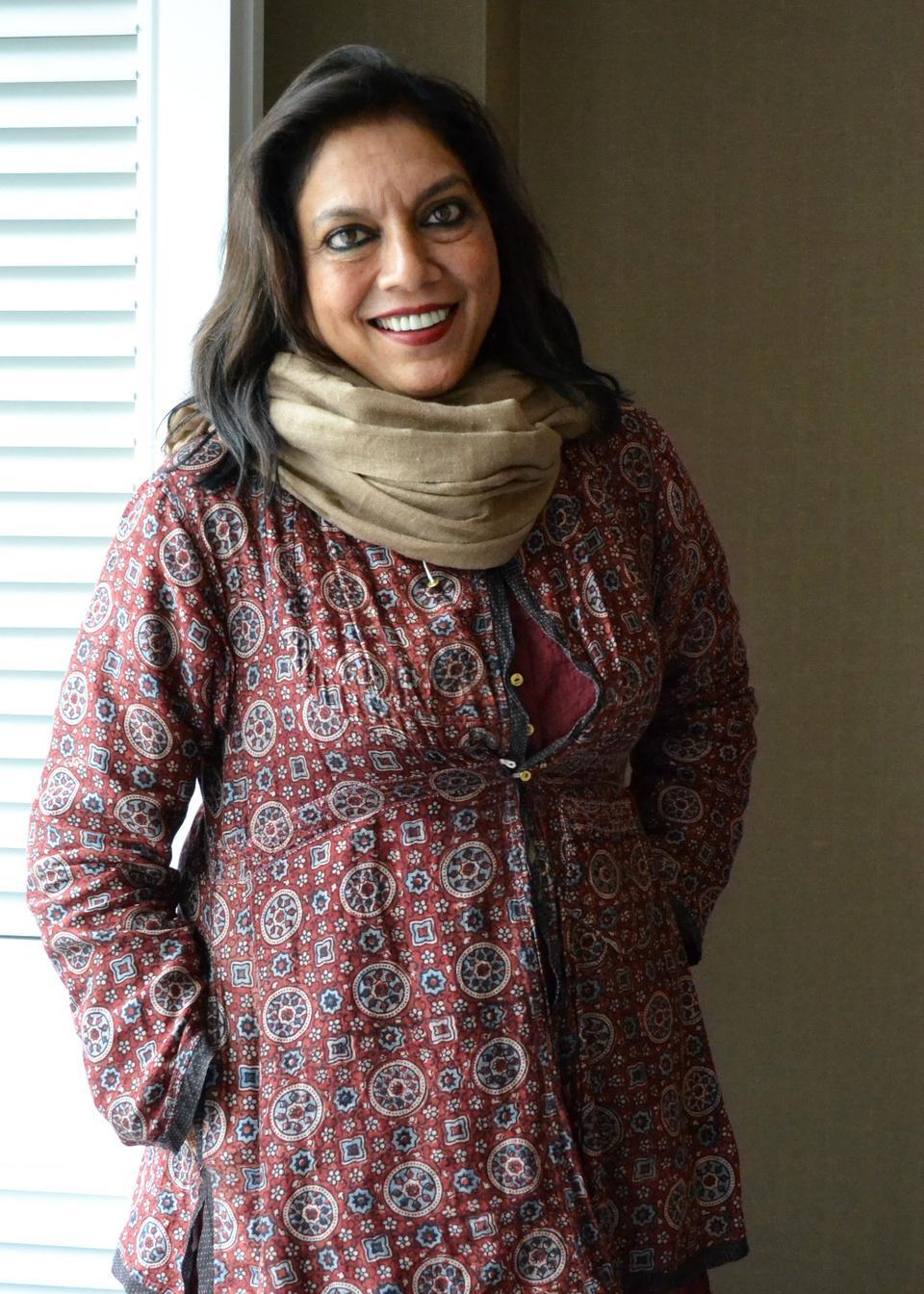
The Fundamental Mira Nair
“I wanted to recomplicate what is so reductive, what has been so reductive and so simple: the bad guys and the good guys,” filmmaker Mira Nair ’79 says. I’m sitting with Nair and two other journalists in a conference room at the Charles Hotel, discussing Nair’s new film, “The Reluctant Fundamentalist,” which comes out in May. “I wanted very much to have that complexity of the human being in both characters—not just two countries, not two flags, but two real people.”
Nair’s hazel eyes are ringed with black liner; she looks at me directly when she speaks. Her voice—deep, quick and rich—and her candor (“You look like a bloody freshman!” she says to the Crimson photographer, a senior, when she enters the room) dispel the stiltedness of the glossy wood table, the formal drapes. When she stands up to be photographed, she throws her dupatta over her shoulders with a flare.
If anyone can complicate an overly-reductive truth, it’s Nair. Indian by birth, a Harvard graduate equally at home in East Africa and New York City, Nair has lived the experience of globalization and hybridization communicated in many of her films. In works like “Salaam Bombay!” (1988) and “Monsoon Wedding” (2001), Nair has explored the beauty and contradiction of life in contemporary India and the South Asian diaspora. In “The Reluctant Fundamentalist,” Nair treats the struggle of living between traditions in a globalized world from a new perspective: that of a Pakistani man, Changez, caught between the worlds of Wall Street money-grubbing and fundamentalist Islam.
The film, an adaptation of Mohsin Hamid’s novel of the same name, follows Princeton grad Changez as he navigates the world of Wall Street in an increasingly Islamaphobic post-9/11 New York. The film is framed as an interview between Changez, who renounces finance and returns to Pakistan, and an American journalist who suspects him of colluding with terrorists, all against the background of a mounting CIA operation in Lahore.
Nair says the inspiration for the film partly came from an experience she had on Harvard’s campus. “I was getting the Harvard Arts medal,” she explains. “And a young man in the audience stood up.” He was from Lahore, and, he said, personally identified with Nair’s films. “I had just made “Monsoon Wedding,” and he said, ‘How did you make this film about me?’” He invited Nair to Lahore. Nair took him up on the offer.
“When I got there, it was just dazzling,” she says. “As a kid in modern India, you don’t get to go to Pakistan easily or often." Yet her visit to Pakistan, she recounts, was “Just like being in an embrace: incredible largesse, incredible artistic expression, incredible refinement everywhere, which is so not the Pakistan you or I read about.”
The result of this inspiration: “The Reluctant Fundamentalist,” Nair’s answer to what she characterizes as the one-sidedness of American discourse on Pakistan and the Muslim world. “In the newspapers and certainly in the movies, it’s always a one-sided conversation. It’s not a conversation. It’s a monologue,” she says. The film’s dialogic allows Pakistan to talk back through Changez. Yet the thriller also elides the notion that people can be reduced to symbols or national affiliations, complicating the nature of the dialogue itself.
In Nair’s work, the political is never far from the aesthetic. In the press packet I am given before the interview, Nair is quoted as saying: “I am interested in creating a visual language for the phenomenon of globalization, which forces the energy of order and chaos to be viewed in the same frame.”
In “The Reluctant Fundamentalist,” the glow and chatter of the Pakistani street contrasts with the cold steel of New York skyscrapers; even Nair’s personal aesthetic—she’s wearing bright maroon in the drab conference room—speaks this language. I ask Nair about how she uses art to navigate these divides: as an Indian making a film about Pakistan, as person of socioeconomic privilege who has made films about prostitutes and street children.
She addresses a scene in the film, wherein Changez’s girlfriend, an artist, makes an installation about him that ends up emphasizing cultural appropriation rather than personal connection. “I have confronted this for years, where very well-meaning people make so-called art, or write, or whatever, really believing that they are holding an olive branch of understanding,” she says. “But it lacks the humility of knowledge, of really understanding the layers of a culture.”
I press the point. “And so in your own work, how do you avoid that lack of humility?” I ask.
“I try to be humble,” she answers. “I am a great believer in that reservoir. I’m very straight about what I know, and I’m very straight about what I don’t know.”
I ask her how she navigates this knowledge of her own limitations, her own strengths, in the face of her status as—for many—an “iconic” South Asian filmmaker. In the sometimes uneasy relationship between America and South Asia depicted in her films, does Nair, who straddles both worlds, feel a pressure to make her work in some way representative of South Asian diasporic experience?
“I don’t like to pander. I don’t like to explain,” she replies, looking me straight in the eye. As she talks, she gestures sweepingly with her hands. “I don’t sit there and explain to you that this is what we do. And this is really what we do, but I really shrink from—I just want you to come into this world and deal with it.” Her films, through their visual order-and-chaos, their music, their sheer sensory vitality, force you into all the beauty and uneasiness of those worlds.
“I like to be both sides,” she continues. “I know both, so it’s a recognition of how we are.” Nair gestures broadly. “My feeling is, when you are like that, when you’re utterly local, you become universal without trying.”


